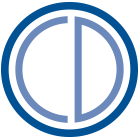OCD affects adults and children of all races, ethnicities, genders, and backgrounds.
At What Age Does OCD Appear?
OCD can start at any time from preschool to adulthood.
Although OCD can occur at any age, there are generally two age ranges when OCD tends to first appear:
- Between the ages of 7 and 12. [1]
- Between the late teen years and early adulthood, around age 20. [2], [3]
How Many Adults Have OCD?
About 1 in 40 adults have OCD or will develop it at some point in their lives. [4] That's approximately 8.2 million adults in the United States - close to the number of people living in New York City. [5]
How Many Children Have OCD?
It is estimated that at least 1 in 100 kids and teens have OCD. [6], [7] This is about the same number of autistic youth globally. [8]
On average, children and teens struggle with their OCD symptoms for 2.5 years before being assessed by a mental health professional. [9]. It can take another 1.5 years between diagnosis and receiving treatment for the first time. [10]. This is due to the confusing nature of OCD and the fact that many youth with symptoms may try to hide them - or may simply not understand what is happening.
Sources:
- [1] Geller, D. A., Homayoun, S., & Johnson, G. (2021). Developmental Considerations in Obsessive Compulsive Disorder: Comparing Pediatric and Adult-Onset Cases. Frontiers in psychiatry, 12, 678538. https://doi.org/10.3389/fpsyt.2021.678538 ↩
- [2] Geller, D. A., Homayoun, S., & Johnson, G. (2021). Developmental Considerations in Obsessive Compulsive Disorder: Comparing Pediatric and Adult-Onset Cases. Frontiers in psychiatry, 12, 678538. https://doi.org/10.3389/fpsyt.2021.678538 ↩
- [3] Anholt, G. E., Aderka, I. M., van Balkom, A. J., Smit, J. H., Schruers, K., van der Wee, N. J., Eikelenboom, M., De Luca, V., & van Oppen, P. (2014). Age of onset in obsessive-compulsive disorder: admixture analysis with a large sample. Psychological medicine, 44(1), 185–194. https://doi.org/10.1017/S0033291713000470 ↩
- [4] Ruscio, A. M., Stein, D. J., Chiu, W. T., & Kessler, R. C. (2010). The epidemiology of obsessive-compulsive disorder in the National Comorbidity Survey Replication. Molecular psychiatry, 15(1), 53-63. ↩
- [5] U.S. Census Bureau. (n.d.). New York City, New York. U.S. Department of Commerce. Retrieved September 19, 2024, from https://data.census.gov/profile/New_York,_New_York?g=160XX00US3651000 ↩
- [6] Browne, H. A., Hansen, S. N., Buxbaum, J. D., Gair, S. L., Nissen, J. B., Nikolajsen, K. H., Schendel, D. E., Reichenberg, A., Parner, E. T., & Grice, D. E. (2015). Familial clustering of tic disorders and obsessive-compulsive disorder. JAMA psychiatry, 72(4), 359–366. https://doi.org/10.1001/jamapsychiatry.2014.2656 ↩
- [7] Geller, D. A., Homayoun, S., & Johnson, G. (2021). Developmental Considerations in Obsessive Compulsive Disorder: Comparing Pediatric and Adult-Onset Cases. Frontiers in psychiatry, 12, 678538. https://doi.org/10.3389/fpsyt.2021.678538 ↩
- [8] Zeidan, J., Fombonne, E., Scorah, J., Ibrahim, A., Durkin, M. S., Saxena, S., Yusuf, A., Shih, A., & Elsabbagh, M. (2022). Global prevalence of autism: A systematic review update. Autism research : official journal of the International Society for Autism Research, 15(5), 778–790. https://doi.org/10.1002/aur.2696 ↩
- [9] Geller, D., Biederman, J., Jones, J., Park, K., Schwartz, S., Shapiro, S., & Coffey, B. (1998). Is juvenile obsessive‐compulsive disorder a developmental subtype of the disorder? A review of the pediatric literature. Journal of the American Academy of Child & Adolescent Psychiatry, 37(4), 420-427. ↩
- [10] Mancebo, M. C., Boisseau, C. L., Garnaat, S. L., Eisen, J. L., Greenberg, B. D., Sibrava, N. J., Stout, R. L., & Rasmussen, S. A. (2014). Long-term course of pediatric obsessive-compulsive disorder: 3 years of prospective follow-up. Comprehensive psychiatry, 55(7), 1498–1504. https://doi.org/10.1016/j.comppsych.2014.04.010 ↩


